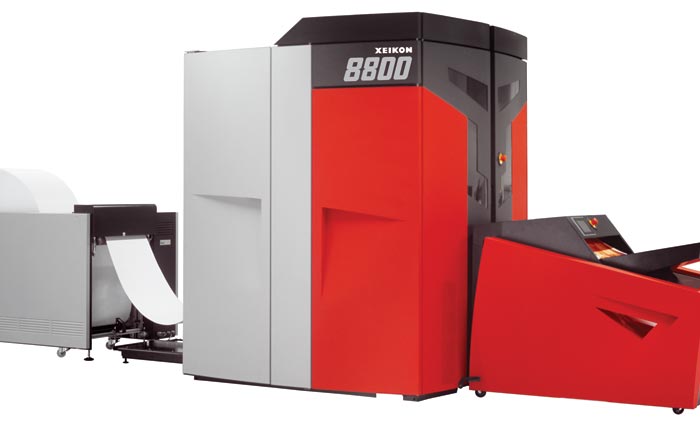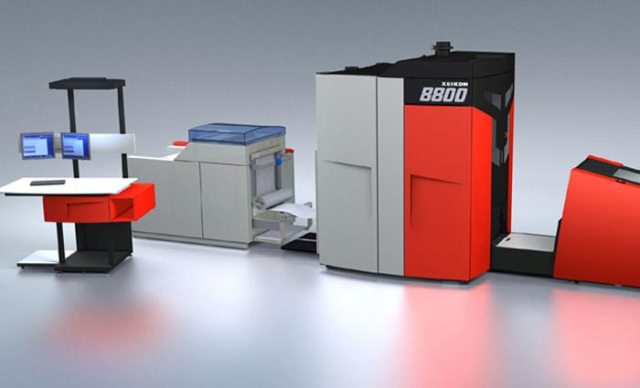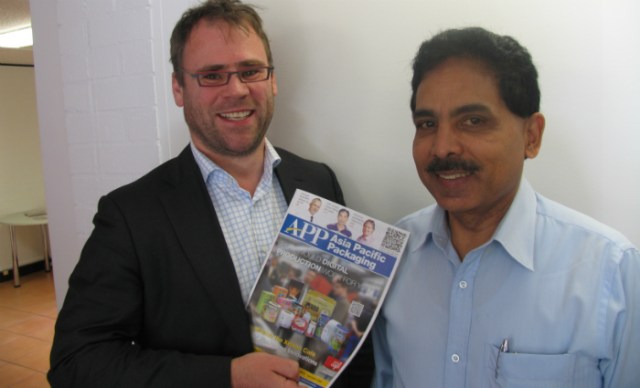

It’s too early, though, to count out toner-based technology and apart from many important – but incremental – improvements we expect to see, there is still potential for groundbreaking improvements in toner technology. At the pre-Drupa press conference on the 7 March in Lisbon, Xeikon hinted at such improvements with what it calls Quantum technology. According to Xeikon, this offers lower running costs at improved speeds, compared to its current toner offerings, while maintaining a high quality.
It believes the latter will set Quantum apart from inkjet, while in speed and running cost it should be similar. The technology is described as being toner-based, waterless and without any volatile organic compounds. Given the promised improvements in speed and cost, everything points towards a liquid toner technology, although Xeikon declined to comment on any details.
The switch to liquid toner would be a major paradigm change, as liquid toner has some fundamental differences to dry toner. It has smaller particle sizes, which is good for quality and speed; however, you need to get rid of the liquid at some point. HP Indigo uses liquid toner technology and extracts and evaporates the liquid with a heated, porous blanket, although this limits the speed somewhat in that the extraction and evaporation process takes time. Given that HP Indigo presses print four colours with the same unit, they are still pretty fast and if there was a four-unit design (or eight for duplex), the speed could be much higher.
All that was said was that the technology (and the company that had been developing it for many years) was bought by Xeikon two years ago and Xeikon now owns the intellectual property rights. Digging up old Punch Graphix/Xeikon annual reports provides no further details, as the acquisition was not mentioned in those.
At Drupa 2012, Quantum will be shown as a technology demonstration at the Xeikon booth. The firm is so confident in the technology that all future document printer lines will be based on it. A timeline for a commercial product has not been set, however, and given the nature of technology demonstrations, it will be years rather than months before anything is available. From now until the opening of Drupa, we can only speculate on the properties of the Quantum.
As Xeikon is positioning itself as a quality leader compared with inkjet, we can expect a quality similar to what 1,200dpi Xeikon presses already offer. The speed would need to be double or triple that of existing products like the Xeikon 8000, which runs at 19 metres per minute, to fulfil the claim of a vastly increased speed. Given this and Xeikon’s heritage, it’s likely to be web-fed. Confirmation of improved running costs and ability to print on any paper can only be confirmed by the final product.
Xeikon has set itself an ambitious goal, but then the company has had enough time to delve into the technology and consider what it takes to make it a product.
Ralf Schlözer is associate director at digital print and document technology analyst Infotrends
Comment below to have your say on this story.
If you have a news story or tip-off, get in touch at editorial@sprinter.com.au.
Sign up to the Sprinter newsletter



